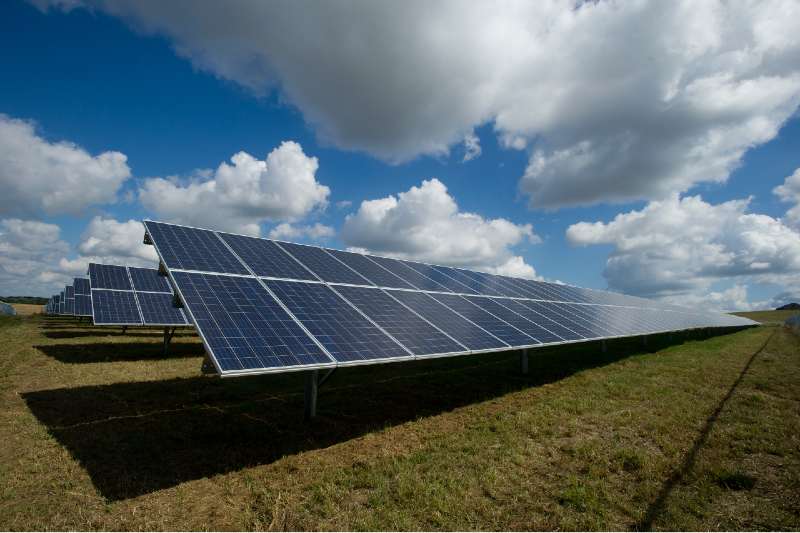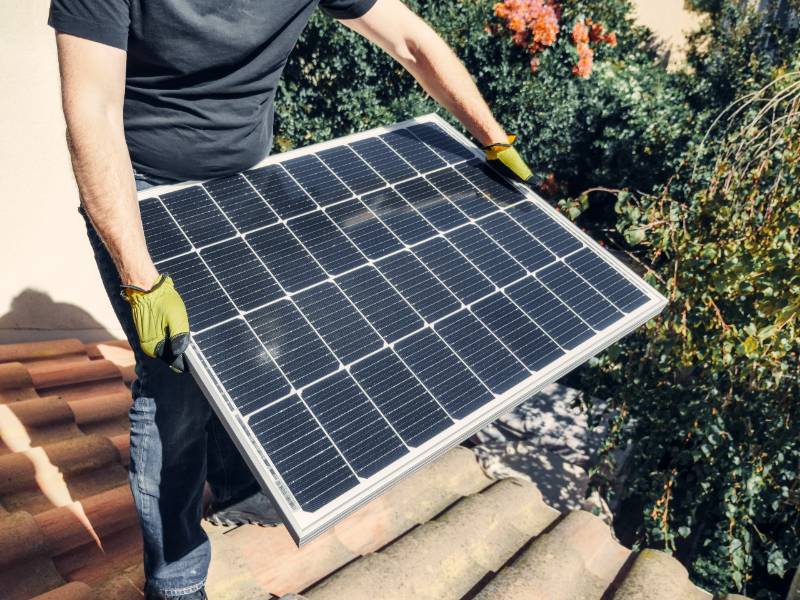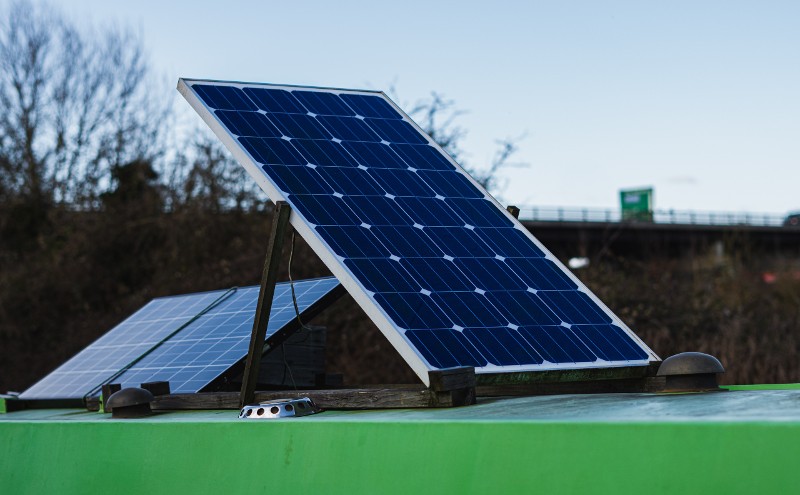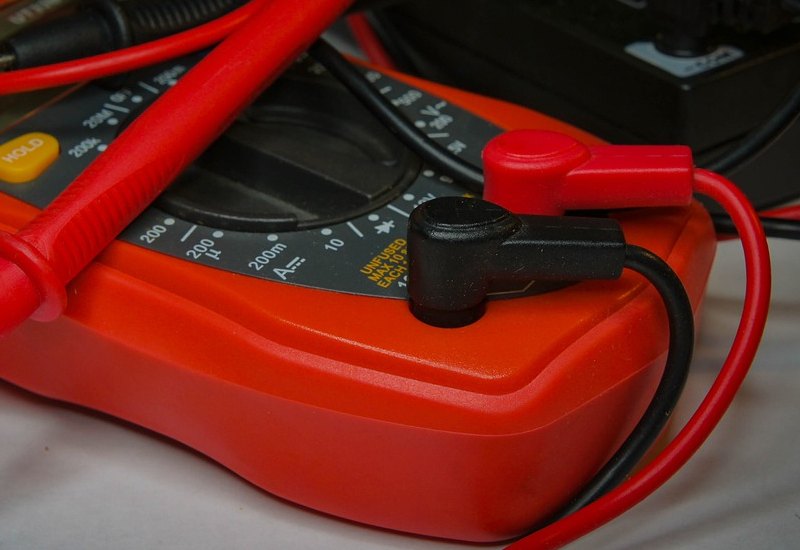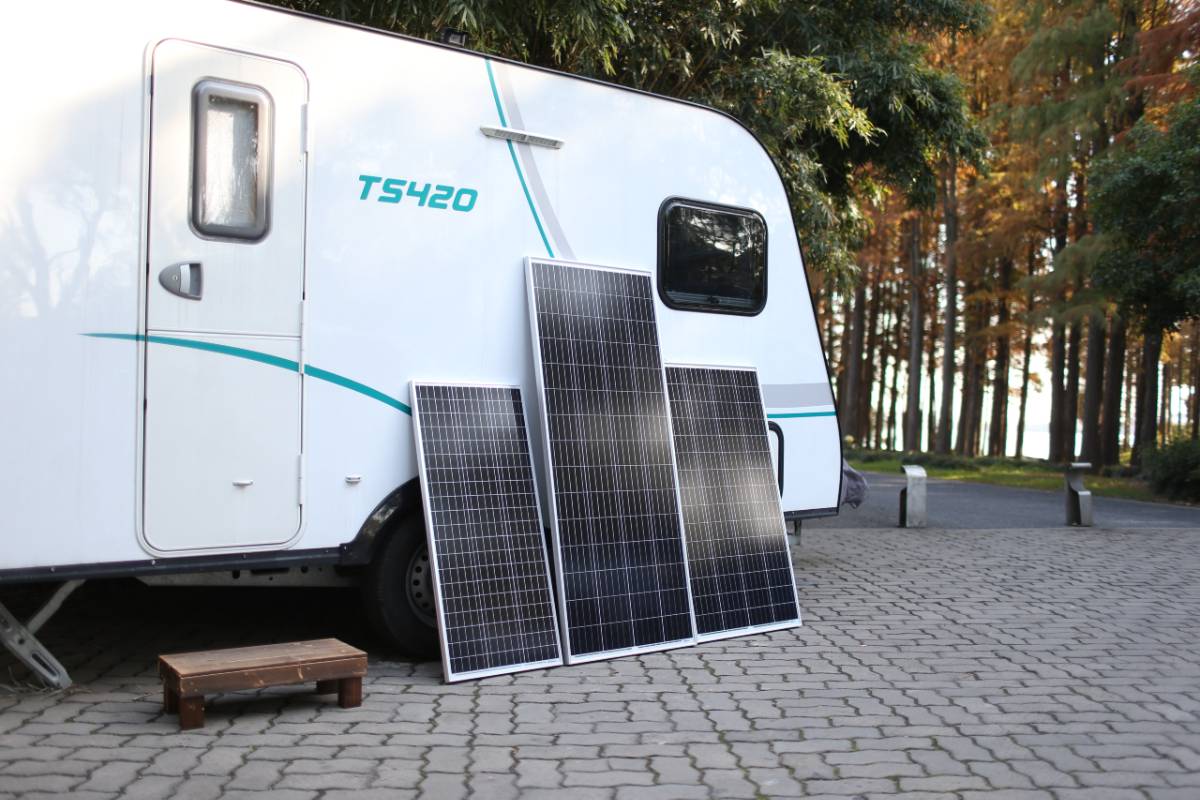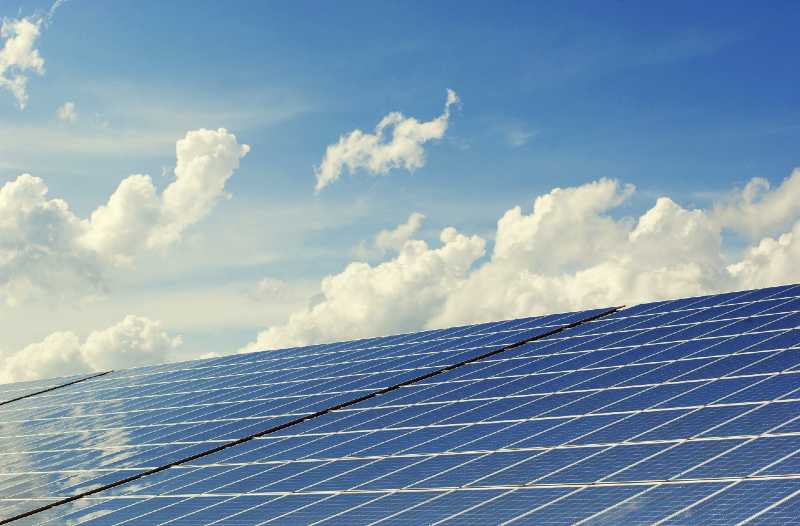In the fight against climate change, it’s vital to use as much renewable energy as we can.
But, getting solar panels to work well on roofs with unusual shapes has been tough.
This is why solar engineers have developed triangular solar panels.
These panels are designed to fit perfectly into the awkward corners and edges of irregularly shaped roofs.
In this article, I’ll walk you through how these triangular solar panels work, their benefits, and why they might be the right choice for your home.
Key Takeaways
- Triangular solar panels maximize energy on complex roof shapes by perfectly fitting into corners and edges where traditional panels can’t.
- Designed for space optimization, these panels are highly durable, integrate seamlessly with traditional ones, and are available in various sizes.
- Types include monocrystalline, highly efficient but expensive; polycrystalline, budget-friendly but less efficient under some conditions; and thin film, flexible for curved surfaces.
- Triangular solar panels cost more due to specialized design and limited production, with few manufacturers driving up prices.
- Most cost-effective when used alongside rectangular panels, triangular panels fill gaps on roofs, optimizing space without overspending.
Why Do We Need Triangular Solar Panels?
We need triangular solar panels to make full use of our rooftop, especially if it’s not just a flat, simple surface.
When you have a roof with gables, hips, or any unusual angles, the typical square or rectangular solar panels might not fit quite right.
This mismatch can lead to awkward gaps where sunlight hits the roof but isn’t converted into energy, effectively wasting this valuable resource.
That’s where triangular solar panels come into play.
They are designed to fit into these tricky spaces perfectly, filling in every nook and cranny so that no part of your roof goes to waste.
This means you can generate more solar power by capturing sunlight from every available inch of your roof.
Triangular solar panels are also useful when your roof has obstacles like skylights or chimneys.
They can be installed around these obstructions, ensuring a seamless and gap-free solar panel setup.
This allows you to maximize energy generation without sacrificing the aesthetics or functionality of your roof.
What Are the Features of Triangular Solar Panels?
Triangular solar panels come with several distinctive features that set them apart from traditional square or rectangular panels:
- Designed for Space Optimization: Triangular solar panels combine square and triangular shapes, perfectly filling unused roof spaces and maximizing solar capture.
- Aesthetics: These panels boast a unique design that can enhance a building’s look, making solar installations more visually appealing and well-integrated with various architectural styles.
- Easy Installation: Triangular solar panels are installed just like rectangular ones and can be mixed with them to cover larger areas more efficiently.
- Installation Flexibility: Their installation mirrors that of rectangular panels, allowing easy integration within diverse layouts for a customized and efficient setup.
- Durability: Built from strong materials, triangular solar panels withstand severe weather, ensuring durability and long-term reliability.
- Size Variability: Available in multiple sizes, triangular panels are versatile for different settings, from small homes to large commercial buildings.
- Efficiency: Although slightly less efficient due to their shape, triangular solar panels are still effective, especially in areas unfit for traditional panels.
What Are the Types of Triangular Solar Panels?
1. Monocrystalline Triangular Solar Panels
Monocrystalline triangular solar panels are made from a single crystal of silicon, which ramps up their efficiency in turning sunlight into electricity.
They’re more efficient than polycrystalline panels, usually generating about 15 to 24% more energy from the same amount of space.
This makes them a great choice for rooftops where you don’t have a lot of room to spare.
Keep in mind, though, that all this efficiency comes at a higher cost.
So, if you’re looking to get the most power out of a smaller space, and it’s within your budget, these panels might be just what you need.
2. Polycrystalline Triangular Solar Panels
Polycrystalline triangular solar panels are a great option if you’re watching your budget.
They’re made from multiple silicon crystals, which makes them more affordable than single-crystal monocrystalline panels.
However, this design does mean they’re a bit less efficient, with an efficiency rate of about 13-16%.
Despite this, they’re still quite effective for most needs.
Just remember, they might not perform as well in extremely hot weather or dim light conditions.
So, I only recommend polycrystalline triangular solar panels if you’re in a climate that has mild temperatures and decent sunlight.
3. Thin Film Triangular Solar Panels
Thin film triangular solar panels are made with a thin layer of amorphous silicon, making them both lightweight and super flexible.
This flexibility means you can easily fit them onto all sorts of surfaces, even curved ones, which is a big plus if your space isn’t just a standard flat roof.
Despite being just about 1 micron thick, they can still be quite effective, with an efficiency rate between 7-18%.
I prefer using these panels for more complex installations where traditional panels wouldn’t work.
For example, on vehicles like solar RVs or boats, where the roof space is limited and often not flat.
4. Bifacial Triangular Solar Panels
Bifacial triangular solar panels can generate electricity from both sides, not just one like the typical solar panels.
This means they catch and use sunlight coming from different directions, boosting their efficiency by up to 27% more than the regular panels.
You can find them in either monocrystalline or polycrystalline versions, so there’s some flexibility depending on your budget and design needs.
But, keep in mind, all this extra efficiency does make them pricier than the usual panels.
They’re especially great in places where sunlight bounces off the ground or nearby structures as they can grab that reflected light and turn it into energy.
For instance, if you live in a snowy region or have a property close to water, these bifacial panels could pay off.
5. Hybrid Triangular Solar Panels
Hybrid triangular solar panels mix different types of solar cells—thin film and monocrystalline—together.
This mix is all about cranking up the efficiency, giving you up to 15% more power than regular panels.
The cool part is that you benefit from each type’s best features, which means more energy from the same amount of space.
But, there’s a catch: because they’re more complex to design and install, they do cost more than your average panel.
I like to use these panels in applications where space is at a premium and every bit of energy production counts.
For instance, on urban rooftops where there isn’t much room to spare, or in dense residential areas where you want to maximize the output from a small surface area.
Why Are Triangular Panels Expensive?
Triangular solar panels are pricier for a couple of straightforward reasons.
First off, they’re not as common as the usual rectangular panels.
Only a handful of manufacturers, like Trienergia in Italy and Salcantay in Spain, actually make them.
This means less competition and, naturally, higher prices.
Also, you won’t find these panels on big marketplaces like Amazon.
This makes it tough to shop around and compare prices, which can push the cost up even further.
For example, Trienergia not only offers these panels in cool colors but also uses top-notch monocrystalline silicon.
Each panel is carefully put together with 21 efficient solar cells and a sturdy anodized aluminum frame.
They even throw in a long warranty that covers 20 years for the product and guarantees performance for up to 30 years.
All this quality comes with a price tag of $150 for a 100-watt module.
All these factors make triangular panels a premium choice and explain why they cost more.
Can Triangular Solar Panels Be Combined With Rectangular Ones?
Triangular solar panels can be combined with rectangular ones without any trouble.
The main difference between them is just their shape.
Triangular panels are specially designed to fit into the tricky corners and edges of your roof where regular rectangular panels might not reach.
Since they’re meant to work together, combining them is a breeze.
You can use different sizes and shapes to fill any gaps or even cover your entire roof.
This flexibility allows you to tailor your solar setup perfectly to your roof’s layout, ensuring you maximize every inch for the best energy production.
Can I Cover My Whole Roof with Triangular Solar Tiles Alone?
You can cover your whole roof with triangular solar tiles if that’s what you want to do.
These panels work just like the regular rectangular ones—the only difference is their shape.
So, you’d still get the same energy output if you managed to fill your entire roof with them.
But, here’s the thing—it might not be the best idea for your wallet.
Triangular panels tend to be pricier than rectangular ones.
To cut costs, you can use rectangular panels wherever they fit and only use triangular ones for those tricky spots that rectangular panels can’t cover.
So, while it’s possible to go all triangular, mixing and matching based on what fits best can save you some money.
What Are the Pros and Cons of Triangular Solar Panels?
Pros
- Optimized Efficiency: Triangular solar panels excel on triangular roofs by filling every nook and cranny, allowing them to generate more electricity in these areas compared to traditional panels.
- High Durability: These panels are built to endure tough weather conditions, ensuring they last a long time and provide a reliable source of energy.
- Space Utilization: Triangular panels are a perfect fit for roofs with unique triangular layouts, effectively utilizing spaces that would otherwise be left empty and unproductive with rectangular panels.
- Environmentally Friendly: As with all solar technology, triangular panels contribute to sustainable energy solutions by harnessing renewable resources and reducing carbon emissions.
Cons
- Increased Cost: The unique shape and less common manufacturing process of triangular panels make them more costly than their rectangular counterparts.
- Design Complexity: The specialized design of these panels adds complexity to their production and installation, potentially increasing the cost and effort required.
- Comparative Efficiency: While they maximize roof space efficiency, the overall energy efficiency of triangular panels might not match that of standard rectangular panels in typical installations.
- Limited Manufacturer Options: Fewer companies produce triangular solar panels, which can make it difficult to shop around for the best deal or to find panels that meet specific requirements.
- Warranty Concerns: Triangular solar panels often come with shorter warranties due to the limited data on their long-term durability, posing a potential risk for buyers.
FAQs
Does Anyone Make Triangular Solar Panels?
Many companies make triangular solar panels, including Trienergia in Italy and Salcantay in Spain, which are tailored for unique roofing requirements.
What Is the Triangle Shape of Solar Panels?
The triangle shape of solar panels refers to panels designed with three sides to fit corners and unconventional roof spaces effectively.
Can Solar Panels Be Made in Any Shape?
While most solar panels are rectangular, they can indeed be made in various shapes, including triangular ones, to accommodate different architectural needs.
Conclusion
As promised, we’ve now covered everything you need to know about triangular solar panels.
We’ve discussed their features, pros and cons, and tips on how to choose the right ones. We’ve also answered some of the most common questions about them.
And if you ask me, I recommend only switching to triangular panels if you have a roof with an unusual shape.
Otherwise, rectangular or square-shaped panels are usually the more cost-effective option.
Do you still have questions?
If so, don’t hesitate to drop them in the comments and I’ll be more than happy to help out.

